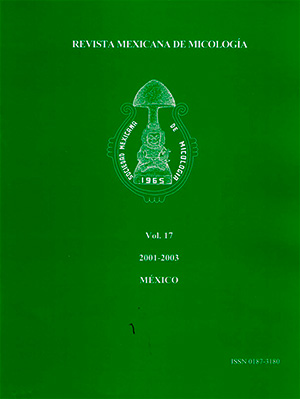The maximum significant yield for statistical analysis of production of Lentinula edodes on commercial sawdust substrate
DOI:
https://doi.org/10.33885/sf.2001.3.902Keywords:
Statistical analysis, maximum significant, yield, mushroom production, Lentinula edodesAbstract
Seven strains of L. edades were grown on a commercial
sawdust substrate. Data of accumulated biological efficiencies (BE = g fresh mushrooms /100 g dry substrate) were
compared with máximum significant yield. To account the effect of replicates, univariable and multivariable analysis of
independent variables resulted necessary for a corred interpretation of production data. Statistical analysis was simplified
by using the máximum significant yield. Since this parameter allows detection of higher yielding strains and optimum
cropping time for each strain, three strains of L. edades with high BE were identified and statistically separated, L9 (261%),
L15 (170%) and L5 (130%).
Downloads
Downloads
How to Cite
Issue
Section
License
Copyright notice
Open access policy
The authors who publish in this journal accept the following conditions:
In accordance with copyright laws, Scientia Fungorum recognizes and respects the authors’ moral rights, as well as the ownership of property rights, which will be transferred to the journal for dissemination in open access. Scientia Fungorum does not charge for submission and processing of articles for publication.
All the texts published by Scientia Fungorum –with no exception– are distributed under a Creative Commons License Attribution-NonCommercial-ShareAlike 4.0 International (CC BY-NC-SA 4.0), which allows third parties to use the publication as long as the work’s authorship and its first publication in this journal are mentioned.
The authors can enter into independent and additional contractual agreements for the nonexclusive distribution of the version of the article published in Scientia Fungorum (for example include it into an institutional repository or publish it in a book) as long as it is clearly and explicitly indicated that the work was published for the first time in Scientia Fungorum.
For all the above, the authors shall send the form of Letter-transfer of Property Rights for the first publication duly filled in and signed by the author(s). This form must be sent as a complementary file.
This work is licensed under a Creative Commons Attribution-NonCommercial-ShareAlike 4.0 International license (CC-By-NC-SA 4.0).



